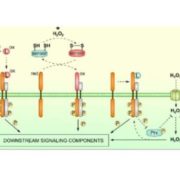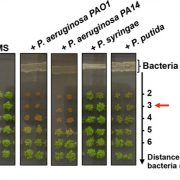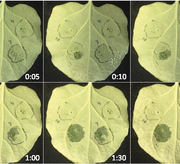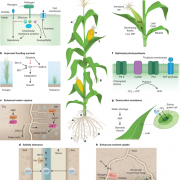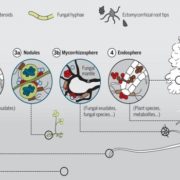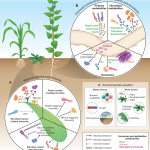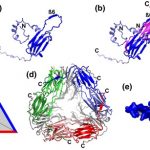Review. Plant immunity: Danger perception and signaling (Cell)
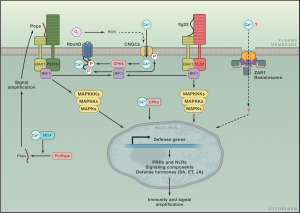 Research from the last three decades has discovered many genes and pathways involved in plant immunity and how they are connected. Here, Zhou and Zhang highlight new research regarding activation and signaling of cell surface pattern recognition receptors (PRRs) and intracellular nucleotide-binding, leucine-rich repeat receptors (NLRs), integration of multiple immunogenic signals to deploy effective defenses, and salicylic acid (SA) biosynthesis and defense gene regulation. Signalling downstream of PRR and NLRs has similarities in their effects, but while PRR responses are transient, they are delayed and prolonged following NLR activation. Transcription of the first enzyme in SA biosynthesis, isochoristmate synthase, is tightly controlled, and SA exerts transcriptional reprogramming by stimulating the transcriptional activation activity of NONEXPRESSOR OF PR GENES 1 (NPR1) while simultaneously inhibiting transcriptional repression by NPR3/NPR4. The interconnectedness of signals from diverse extra- and intra-cellular receptors is truly key to fine tune the defense response against the specific microbe invader. Many questions remain about connections within the plant defense network which will be exciting to see unraveled in the upcoming years. (Summary by Katy Dunning @PlantMomKaty) Cell 10.1016/j.cell.2020.04.028
Research from the last three decades has discovered many genes and pathways involved in plant immunity and how they are connected. Here, Zhou and Zhang highlight new research regarding activation and signaling of cell surface pattern recognition receptors (PRRs) and intracellular nucleotide-binding, leucine-rich repeat receptors (NLRs), integration of multiple immunogenic signals to deploy effective defenses, and salicylic acid (SA) biosynthesis and defense gene regulation. Signalling downstream of PRR and NLRs has similarities in their effects, but while PRR responses are transient, they are delayed and prolonged following NLR activation. Transcription of the first enzyme in SA biosynthesis, isochoristmate synthase, is tightly controlled, and SA exerts transcriptional reprogramming by stimulating the transcriptional activation activity of NONEXPRESSOR OF PR GENES 1 (NPR1) while simultaneously inhibiting transcriptional repression by NPR3/NPR4. The interconnectedness of signals from diverse extra- and intra-cellular receptors is truly key to fine tune the defense response against the specific microbe invader. Many questions remain about connections within the plant defense network which will be exciting to see unraveled in the upcoming years. (Summary by Katy Dunning @PlantMomKaty) Cell 10.1016/j.cell.2020.04.028


